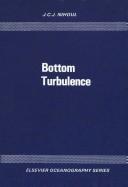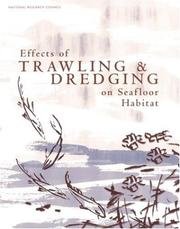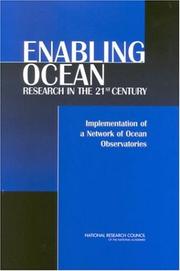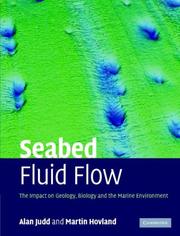| Listing 1 - 10 of 17 | << page >> |
Sort by
|
Periodical
ISSN: 18790100 09670645 Year: 1993 Publisher: Oxford : Elsevier Science
Abstract | Keywords | Export | Availability | Bookmark
 Loading...
Loading...Choose an application
- Reference Manager
- EndNote
- RefWorks (Direct export to RefWorks)
Oceanography --- Ocean bottom --- Marine biology --- Océanographie --- Fonds marins --- Biologie marine --- Oceanografie. --- Périodiques. --- Bottom of the ocean --- Floor of the ocean --- Ocean floor --- Sea bed --- Sea floor --- Seafloor --- Seabed --- Subsoil of the ocean floor --- Submarine topography

ISBN: 0309041260 9786610214167 1280214163 0309595991 0585143935 9780585143934 9780309041263 Year: 1989 Publisher: Washington, D.C. National Academy Press
Abstract | Keywords | Export | Availability | Bookmark
 Loading...
Loading...Choose an application
- Reference Manager
- EndNote
- RefWorks (Direct export to RefWorks)
The establishment of the US Exclusive Economic Zone (EEZ) in 1983 presents the nation with an opportunity and a challenge to wisely use its diverse resources. This book assesses the state of knowledge of seafloor properties and processes as they relate to utilization of the US EEZ seabed.
Ocean bottom --- Submarine topography. --- Bottom relief, Ocean --- Relief, Submarine --- Topography, Submarine --- Bottom of the ocean --- Floor of the ocean --- Ocean floor --- Sea bed --- Sea floor --- Seafloor --- Seabed --- Subsoil of the ocean floor --- Geomorphology --- Submarine topography
Book
ISBN: 0128239883 9780128242414 0128242418 9780128239889 Year: 2022 Publisher: London, United Kingdom : Academic Press,
Abstract | Keywords | Export | Availability | Bookmark
 Loading...
Loading...Choose an application
- Reference Manager
- EndNote
- RefWorks (Direct export to RefWorks)
Ocean bottom --- Geology, Stratigraphic --- Caenozoic Era --- Cainozoic Era --- Cenozoic Era --- Mesozoic Era --- Bottom of the ocean --- Floor of the ocean --- Ocean floor --- Sea bed --- Sea floor --- Seafloor --- Seabed --- Subsoil of the ocean floor --- Submarine topography

ISBN: 0444415742 9780444415745 9780080870557 0080870554 1281772380 9786611772383 Year: 1977 Volume: 19 Publisher: Amsterdam Elsevier
Abstract | Keywords | Export | Availability | Bookmark
 Loading...
Loading...Choose an application
- Reference Manager
- EndNote
- RefWorks (Direct export to RefWorks)
Bottom Turbulence
Colloques --- Colloquia --- Mechanica --- Mécanique --- Oceanografie --- Océanographie --- Turbulence --- Turbulent boundary layer --- Ocean bottom --- Congresses --- -Turbulence --- -Turbulent boundary layer --- -Boundary layer --- Flow, Turbulent --- Turbulent flow --- Fluid dynamics --- Bottom of the ocean --- Floor of the ocean --- Ocean floor --- Sea bed --- Sea floor --- Seafloor --- Seabed --- Subsoil of the ocean floor --- Submarine topography --- Congresses. --- -Congresses --- Turbulence - Congresses --- Turbulent boundary layer - Congresses --- Ocean bottom - Congresses

ISBN: 0309083400 9786610184477 1280184477 0309508150 9780309508155 9780309083409 0305083400 0309169801 Year: 2002 Publisher: Washington, D.C. ; [Great Britain] : National Academy Press,
Abstract | Keywords | Export | Availability | Bookmark
 Loading...
Loading...Choose an application
- Reference Manager
- EndNote
- RefWorks (Direct export to RefWorks)
Concerns over the potential ecological effects of fishing have increased with the expansion of fisheries throughout the marine waters of the United States. Effects of Trawling and Dredging on Seafloor Habitat describes how assessment of fishing impacts depends on gear type, number and location of bottom tows, and the physical and biological characteristics of seafloor habitats. Many experimental studies have documented acute, gear-specific effects of trawling and dredging on various types of habitat. These studies indicate that low mobility, long-lived species are more vulnerable to towed fishing gear than short-lived species in areas where the seabed is often disturbed by natural phenomena. Trawling and dredging may also change the composition and productivity of fish communities dependent on seafloor habitats for food and refuge. The scale of these impacts depends on the level of fishing effort. This volume presents color maps of fishing effort for all regions with significant bottom trawl or dredge fisheries--the first time that such data has been assembled and analyzed for the entire nation.
Fisheries -- Environmental aspects. --- Marine resources conservation. --- Ocean bottom. --- Trawls and trawling -- Environmental aspects. --- Agriculture --- Earth & Environmental Sciences --- Animal Sciences --- Trawls and trawling --- Trawl fisheries --- Trawl fishing --- Trawling --- Fisheries --- Fishing nets --- Bottom of the ocean --- Floor of the ocean --- Ocean floor --- Sea bed --- Sea floor --- Seafloor --- Seabed --- Subsoil of the ocean floor --- Submarine topography --- Environmental aspects. --- Equipment and supplies

ISBN: 0309089905 9786610179503 1280179503 0309526450 9780309526456 9781280179501 9780309089906 0309167140 Year: 2003 Publisher: Washington, D.C. National Academies Press
Abstract | Keywords | Export | Availability | Bookmark
 Loading...
Loading...Choose an application
- Reference Manager
- EndNote
- RefWorks (Direct export to RefWorks)
Oceanographic research stations. --- Ocean bottom. --- Bottom of the ocean --- Floor of the ocean --- Ocean floor --- Sea bed --- Sea floor --- Seafloor --- Seabed --- Subsoil of the ocean floor --- Anchor stations (Oceanography) --- Deep-sea instrument stations --- Oceanographic laboratories --- Research stations, Oceanographic --- Stations, Oceanographic research --- Unmanned instrument stations (Oceanography) --- Submarine topography --- Observatories --- Oceanography --- Research
Book
ISBN: 3319339389 3319339400 Year: 2017 Publisher: Cham : Springer International Publishing : Imprint: Springer,
Abstract | Keywords | Export | Availability | Bookmark
 Loading...
Loading...Choose an application
- Reference Manager
- EndNote
- RefWorks (Direct export to RefWorks)
This atlas illustrates the characteristics of present-day bedforms, from the shoreline to deep-sea environments, and it also includes short reviews of the main mechanisms that generate such bedforms. The atlas is aimed at the research community, in addition to students, the public at large and companies with interests in the marine environment. The book is divided into seven sections composed of a number of short chapters: 1) bedform analysis and the main physical processes, 2) bedforms in the coastal zone, 3) bedforms on prodeltas and sorted bedforms, 4) bedforms on the continental shelf, 5) bedforms and benthos, 6) bedforms in submarine canyons and 7) slope and deep-sea bedforms. This atlas offers a comprehensive, though not exhaustive, view of the diversity of bedforms and associated processes and of the morphological and temporal scales in the enclosed tideless western Mediterranean Sea.
Bottom of the ocean --- Floor of the ocean --- Ocean floor --- Sea bed --- Sea floor --- Seafloor --- Seabed --- Subsoil of the ocean floor --- Geography. --- Sedimentology. --- Geophysics. --- Oceanography. --- Geomorphology. --- Geophysics/Geodesy. --- Ocean bottom --- Submarine topography --- Physical geography. --- Geography --- Petrology --- Oceanography, Physical --- Oceanology --- Physical oceanography --- Thalassography --- Earth sciences --- Marine sciences --- Ocean --- Geological physics --- Terrestrial physics --- Physics --- Geomorphic geology --- Physiography --- Physical geography --- Landforms

ISBN: 9780521819503 0521819504 9780511535918 9780521114202 0511269390 9780511269394 9780511269950 0511269951 0511535910 1280750324 9781280750328 051126836X 9780511268366 051126903X 9780511269035 9786610750320 6610750327 1107159423 9781107159426 0511320515 9780511320514 Year: 2007 Publisher: Cambridge New York Cambridge University Press
Abstract | Keywords | Export | Availability | Bookmark
 Loading...
Loading...Choose an application
- Reference Manager
- EndNote
- RefWorks (Direct export to RefWorks)
Seabed fluid flow involves the flow of gases and liquids through the seabed. Such fluids have been found to leak through the seabed into the marine environment in seas and oceans around the world - from the coasts to deep ocean trenches. This geological phenomenon has widespread implications for the sub-seabed, seabed, and marine environments. Seabed fluid flow affects seabed morphology, mineralization, and benthic ecology. Natural fluid emissions also have a significant impact on the composition of the oceans and atmosphere; and gas hydrates and hydrothermal minerals are potential future resources. This book describes seabed fluid flow features and processes, and demonstrates their importance to human activities and natural environments. It is targeted at research scientists and professionals with interests in the marine environment. Colour versions of many of the illustrations, and additional material - most notably feature location maps - can be found at www.cambridge.org/9780521819503.
Fluid mechanics --- Hydrosphere --- Hydrobiology --- Petroleum technology. Petrochemistry --- Ocean bottom. --- Marine sediments --- Upwelling (Oceanography) --- Deep-sea ecology. --- Marine ecology --- Ocean circulation --- Gases in marine sediments --- Bottom of the ocean --- Floor of the ocean --- Ocean floor --- Sea bed --- Sea floor --- Seafloor --- Seabed --- Subsoil of the ocean floor --- Submarine topography --- Gas content. --- Ocean bottom ecology. --- Ocean bottom --- Seabed ecology --- Ecology
Book
ISBN: 9780128149614 0128149612 0128149604 9780128149607 Year: 2020 Publisher: Amsterdam, Netherlands ; Oxford, England ; Cambridge, Massachusetts : Elsevier,
Abstract | Keywords | Export | Availability | Bookmark
 Loading...
Loading...Choose an application
- Reference Manager
- EndNote
- RefWorks (Direct export to RefWorks)
Submarine topography. --- Ocean bottom --- Benthos --- Environmental mapping --- Submarine topography --- Habitat --- Bottom relief, Ocean --- Relief, Submarine --- Topography, Submarine --- Geomorphology --- Environmental value mapping --- Value mapping, Environmental --- Cartography --- Benthal organisms --- Benthic organisms --- Benthonic organisms --- Aquatic biology --- Aquatic organisms --- Bottom of the ocean --- Floor of the ocean --- Ocean floor --- Sea bed --- Sea floor --- Seafloor --- Seabed --- Subsoil of the ocean floor
Book
ISBN: 3642335926 3642335934 Year: 2013 Publisher: Heidelberg : Shanghai Jiao Tong University Press : Springer,
Abstract | Keywords | Export | Availability | Bookmark
 Loading...
Loading...Choose an application
- Reference Manager
- EndNote
- RefWorks (Direct export to RefWorks)
"Porous Models for Wave-seabed Interactions" discusses the Phenomenon of wave-seabed interactions, which is a vital issue for coastal and geotechnical engineers involved in the design of foundations for marine structures such as pipelines, breakwaters, platforms, etc. The most important sections of this book will be the fully detailed theoretical models of wave-seabed interaction problem, which are particularly useful for postgraduate students and junior researchers entering the discipline of marine geotechnics and offshore engineering. This book also converts the research outcomes of theoretical studies to engineering applications that will provide front-line engineers with practical and effective tools in the assessment of seabed instability in engineering design. Prof. Dong-Sheng Jeng works at Shanghai Jiao Tong University, China.
Fluid mechanics -- Congresses. --- Civil & Environmental Engineering --- Engineering & Applied Sciences --- Civil Engineering --- Submarine topography. --- Ocean bottom. --- Submarine geology. --- Geological oceanography --- Geology, Submarine --- Marine geology --- Bottom of the ocean --- Floor of the ocean --- Ocean floor --- Sea bed --- Sea floor --- Seafloor --- Seabed --- Subsoil of the ocean floor --- Bottom relief, Ocean --- Relief, Submarine --- Topography, Submarine --- Earth sciences. --- Coasts. --- Geotechnical engineering. --- Civil engineering. --- Building construction. --- Earth Sciences. --- Geotechnical Engineering & Applied Earth Sciences. --- Civil Engineering. --- Offshore Engineering. --- Coastal Sciences. --- Submarine topography --- Geology --- Geomorphology
| Listing 1 - 10 of 17 | << page >> |
Sort by
|

 Search
Search Feedback
Feedback About UniCat
About UniCat  Help
Help News
News